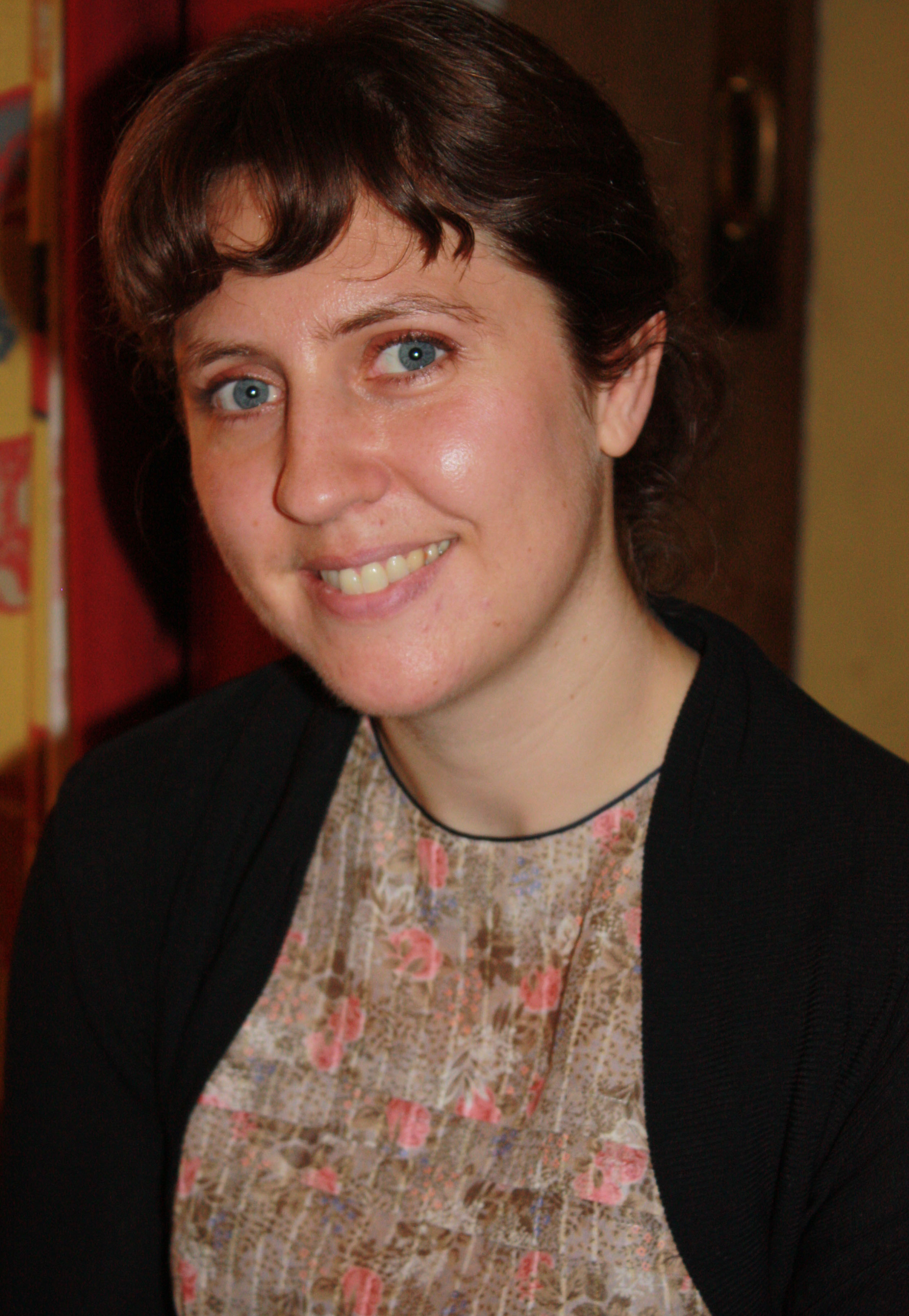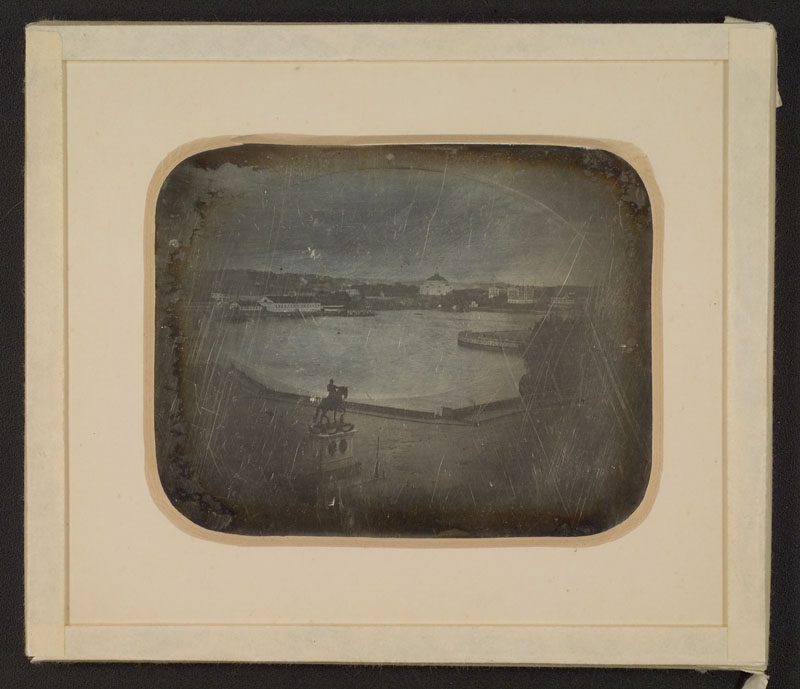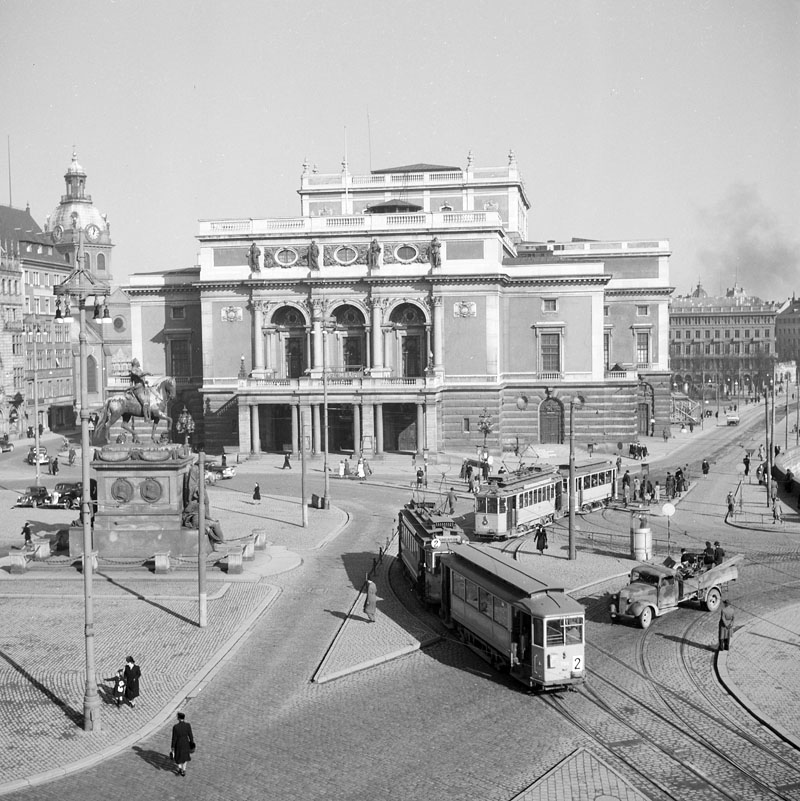Stockholm then and now
Sandra Sporrenstrand, a librarian in Stockholm, visited Svenska Kyrkan in New York to introduce Stockholmskällan, an online source for everything connected to the history of the Swedish capitol.
-
 Librarian Sandra Sporrenstrand at the Swedish Church in New York.
Librarian Sandra Sporrenstrand at the Swedish Church in New York. -
-
Stockholm librarian Sandra Sporrenstrand visited the Swedish Church in New York for an evening’s talk about Stockholm then and now. Sporrenstrand was delightful as she introduced the audience to Stockholmskällan, a website with extensive information about our country’s capital: Not only photos and texts are available here, but also maps (you can compare a certain neighborhood today with what it looked like a hundred years ago), film clips, art works and other kinds of material that in different ways tell the story of Stockholm. This type of affair - not the least pretentious yet fascinating and perfectly set to last an hour - is precisely what makes going to the Swedish Church so great (apart from the obvious spiritual reasons, coffee and a generally wonderful ambivalence). Sporrenstrand’s personal talk about a city she obviously is in love with opened our eyes to the many changes Stockholm has gone through during the past decades.
-
 Gustav Adolfs Torg in 1841... Source: Stockholms stadsmuseum / stockholmskallan.se (The recognizable statue of Gustav II Adolf had been unveiled already 1796)
Gustav Adolfs Torg in 1841... Source: Stockholms stadsmuseum / stockholmskallan.se (The recognizable statue of Gustav II Adolf had been unveiled already 1796) -
-
“Here’s the oldest photo that exists of Stockholm,” she said, showing a daguerreotype from 1841 featuring Gustav Adolfs Torg. “It was a lively place then, although it doesn’t look like it in this picture, but that has to do with the technical difficulties of taking pictures back then. Hotel Rydberg was situated here, and it was a popular meeting place where later on people like Hjalmar Söderberg and Albert Engström would hang out. And it is also from here that the dish Biff à la Rydberg stems.”
-
 ..and in the 1940s - not that different from today. Stockholms stadsmuseum / Photo: Lennart af Petersens, (1913-2004)
..and in the 1940s - not that different from today. Stockholms stadsmuseum / Photo: Lennart af Petersens, (1913-2004) -
Much changed but far from all
Sporrenstrand also showed photos from the old Klara neighborhood, and it "makes you sentimental today to think of what Klarakvarteren once were and what they looked like." Film clips of the building of Stockholm City were shown; the five Hötorgsskraporna that were built between 1955-1966 forever changed Stockholm’s skyline.
“I love Stockholm, and will probably never leave,” Sporrenstrand said and revealed a marvelous photo bathing in mysterious light, taken from her own apartment. “From my balcony I can see the silhouette of Stockholms polishus (the Stockholm Police HQ).”
A quote from the 17th century about the place that today is Slussen reads: “Skräckeliga mycket folk som där möta var andra…” (a terrible amount of people there meet). Slussen today suffers from the same problem, so it is clearly not a contemporary issue: An extensive rebuilding is planned for 2013-2020.
But all has not changed in Stockholm, and won’t. Gamla Stan looks almost the same as it always has.
“Stockholmers want to keep it like that,” Sporrenstrand explained.
Of course, is there anything prettier than a walk through Gamla Stan summertime?
For more information check out www.stockholmskallan.se
For more information about the activities at Svenska Kyrkan in New York: www.svenskakyrkan.se/default.aspx?id=546526 -
-
